UAM-08160X-SE4T
10KM Long-range Underwater Acoustic Modems (UAMs)
Built-in duty module / Long-term observation / Externally powered / 6000m
The UM-08160X-SE4T is an underwater acoustic communication device designed for long-term observation platforms such as seabed bases and buoys. Featuring a modular TC4 titanium alloy structure, it offers lightweight durability, corrosion resistance, and flexible installation. Externally powered, the device allows users to design custom battery compartments to meet diverse mission requirements while supporting a low-power duty mode for energy efficiency.
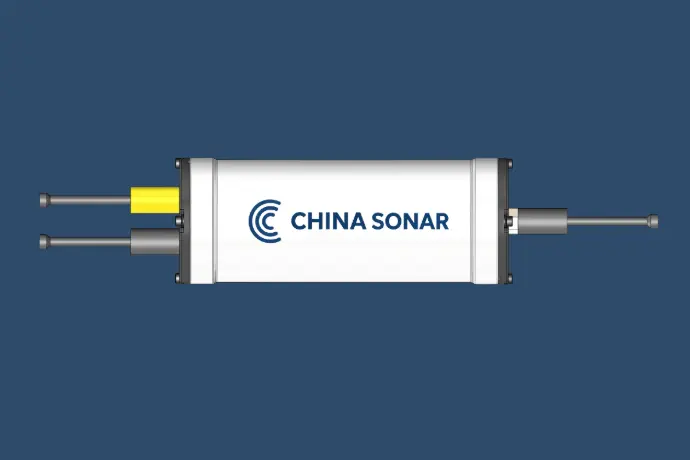
UAM-08160X-IE3S
Key Features
- AUV-Optimized Communication – Provides reliable acoustic links for AUVs, ensuring stable navigation, mission control, and data transmission.
- Deep-Sea Capability – Operates at depths up to 6000 meters, suitable for extreme subsea operations.
- Lightweight & Durable – Constructed from TC4 titanium alloy, combining strength with reduced weight, making it ideal for mobile underwater vehicles.
- Flexible Power Options – Externally powered with customizable battery compartments.
- Reliable Long-Range Communication – Achieves 10 km underwater communication with up to 4 kbps data rate (BER 10⁻⁴).
- Protocol Support – Supports standard control protocols, with technical assistance for custom protocol development.
Overview
Applications
- AUV communication systems
- Seabed base communication
- Buoy data relay and ocean monitoring
- Long-term marine research and subsea data transmission
Specifications
Application Diagram
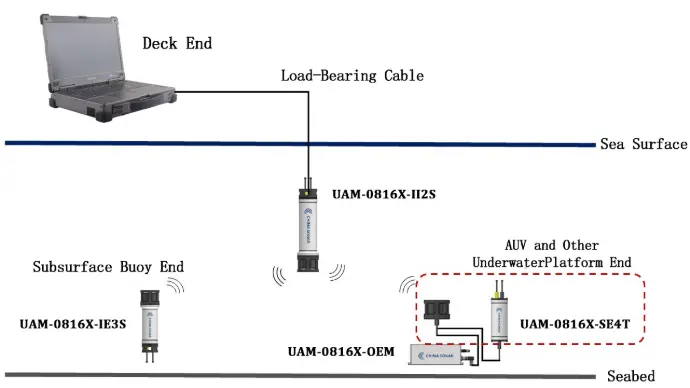
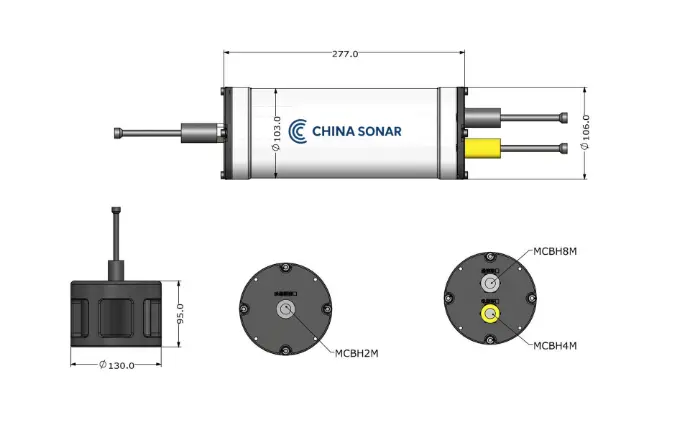
Related UAM Product series
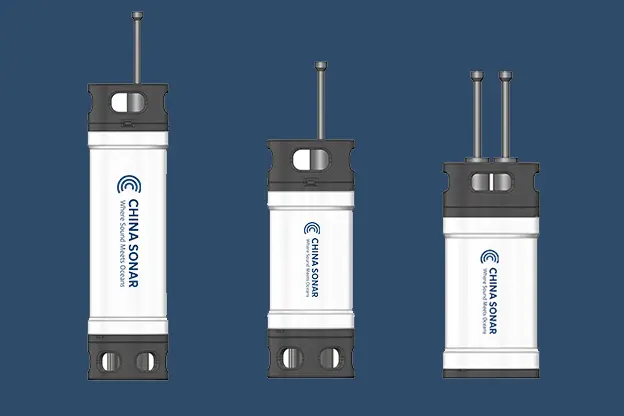
UAM-16320X Series
Frequency: 16kHz-32kHz
Communication Distance: 3km
Communication Rate:100-4kbps
Bit Error Rate:
10⁻⁴
Operating Range: 300m
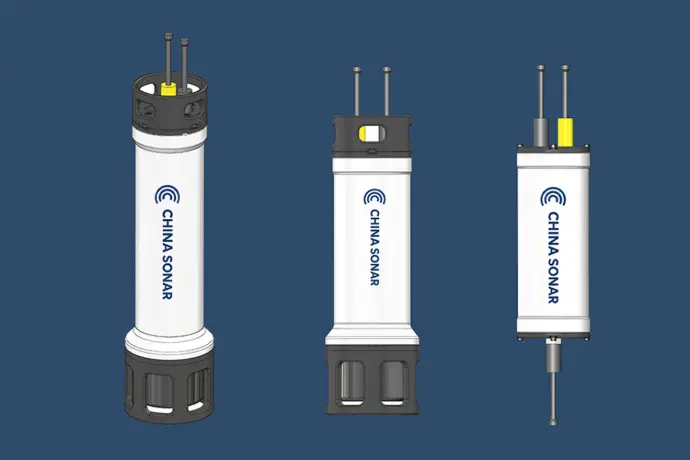
UAM-08160X Series
Frequency: 8kHz-16kHz
Communication Distance: 10km
Communication Rate:100-4kbps
Bit Error Rate:
10⁻⁴
Operating Range: 300-6000m
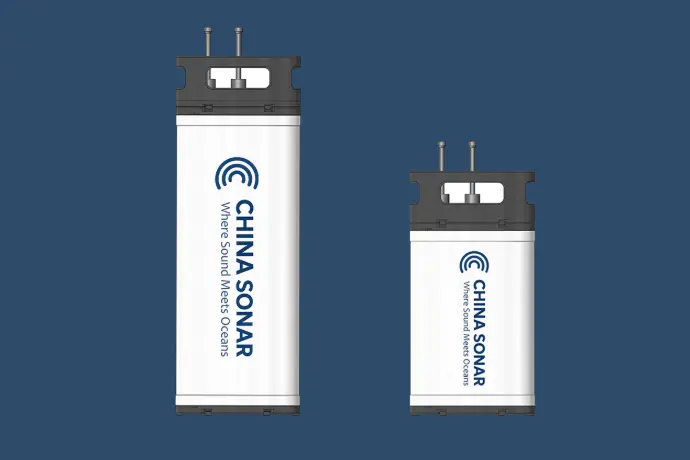
UAM-04080X Series
Frequency: 4kHz-8kHz
Communication Distance: 30km
Communication Rate:100-1kbps
Bit Error Rate:
10⁻⁴
Operating Range: 6000m
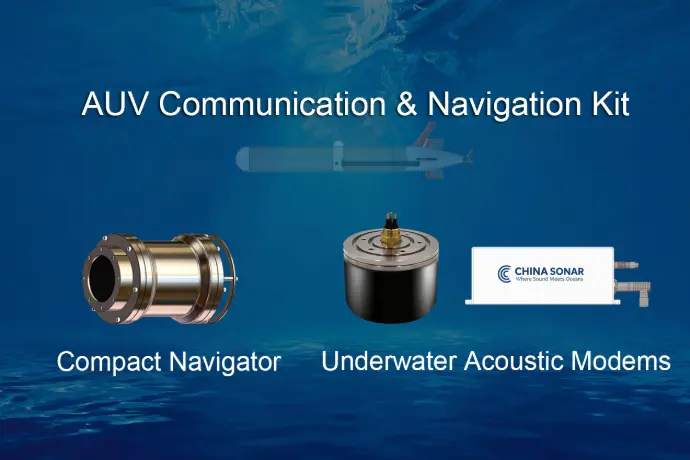
AUV Communication & Navigation Kit
Compact Navigator & Underwater Acoustic Modem
Designed for Autonomous Underwater Vehicles (AUVs), the AUV Communication & Navigation Kit delivers high-precision navigation and reliable underwater communication in a unified solution.
- NAVS-3000 Compact Navigator — Provides INS-based positioning, DVL velocity measurements, and depth data for precise real-time navigation.
-
UAC-08160X-OEM Underwater Acoustic Modem — Ensures stable, long-range underwater communication across multiple frequency bands.